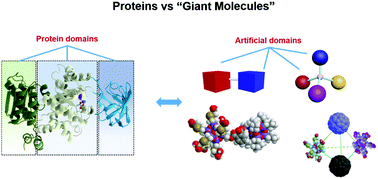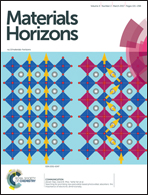From protein domains to molecular nanoparticles: what can giant molecules learn from proteins?
Abstract
Synthetic polymers are still considered as primitive as compared to the sophisticated polymeric machines like proteins. There is so much that synthetic materials can learn from proteins. This review discusses an emerging class of precision macromolecules called “giant molecules” in the context of materials genome initiative, as a tribute to the workhorse of Nature – the proteins. In protein science, modular protein domains can be tuned and combined in different ways to create new and versatile functions. Inspired by the “domain” concept, we draw an analogy between protein domains and molecular nanoparticles with the hope of developing “artificial domains” for synthetic polymers. Giant molecules are polymers built on such artificial domains. The two categories are then discussed in parallel with respect to their specific types, how they can be engineered, and how they would assemble hierarchically. Indeed, giant molecules share many features common with proteins and exhibit many unconventional hierarchically assembled structures and intriguing phase behaviors at different length, energy and time scales. The functions of giant molecules and their relation to the assembled hierarchical structures are under intense investigation, which shall pave the way to developing a modular and rational approach for advanced materials. Under the materials genome initiative, the field of giant molecules calls for an even closer, more dynamic and creative joint endeavor among chemistry, physics, and biology.



 Please wait while we load your content...
Please wait while we load your content...